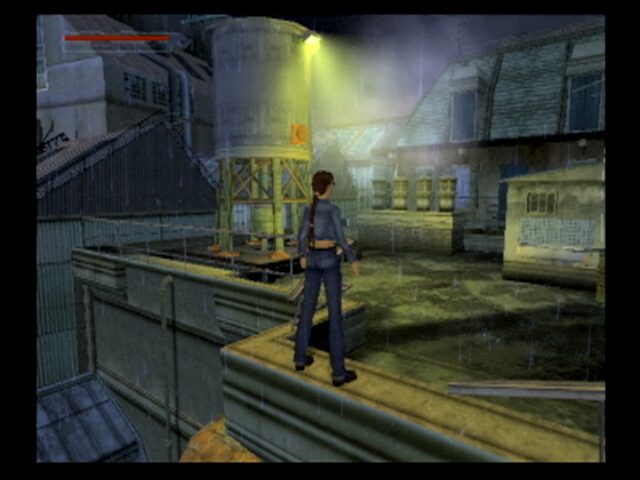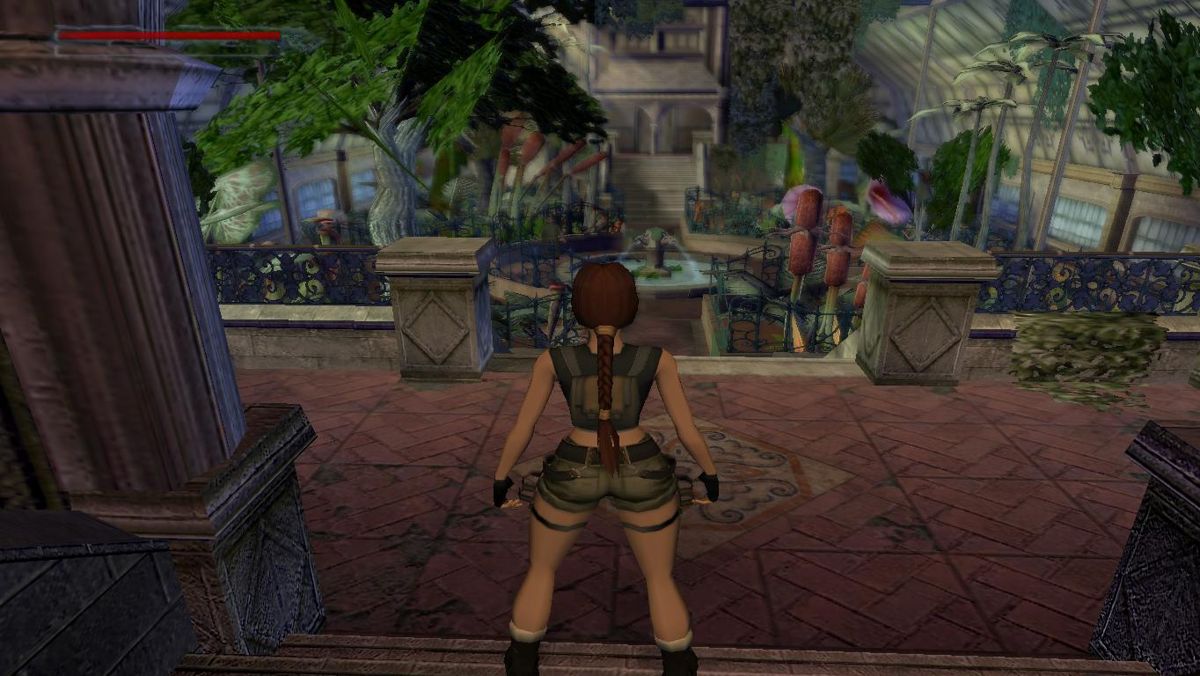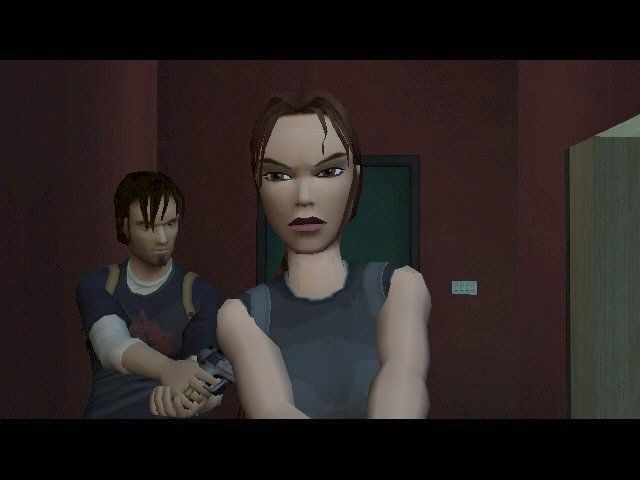Retro Replay Review
Gameplay
Lara Croft: Tomb Raider – The Angel of Darkness makes a bold attempt to reinvent the series’ familiar formula with an emphasis on stealth, close-quarters combat, and narrative-driven exploration. Players guide Lara through atmospheric environments, from damp sewers to ornate European estates, with a mix of platforming, puzzle-solving, and third-person shooting. The controls have been streamlined to allow Lara to duck, sneak, and hug walls, giving a more tactical approach compared to earlier entries.
One of the most significant additions to the gameplay is the expanded combat system. Lara can now engage foes in hand-to-hand encounters, execute takedowns, and utilize a variety of melee options when ammunition runs low. This close-quarters mechanic feels fresh, but some players may find the transitions between shooting and melee a bit uneven until they acclimate to the rhythm of the fights. Power-ups and strategically placed weapons encourage players to adapt on the fly.
Platforming remains at the heart of Angel of Darkness, with multi-stage leaps, wall-shimming, and pulley-based puzzles peppered throughout each level. The game’s challenge comes from a blend of timing-based jumps and environmental puzzles that require careful observation. Lara must move crates, manipulate switches, and occasionally backtrack to uncover secret paths or reclaim missed collectibles. The level design supports exploration, though some backtracking can feel repetitive without clear guidance.
Graphics
Visually, Angel of Darkness pushes the limits of the era’s hardware to create moody, atmospheric locales. The game’s London streets at night, misty cemeteries, and labyrinthine factories are rendered with detailed textures and dynamic lighting effects that enhance the sense of dread and mystery. Shadows play across stone walls and rusted metal, setting an eerie tone as Lara uncovers clues to the Angel’s plot.
Character models for Lara and supporting cast boast improved polygon counts, capturing more expressive facial animations during cutscenes. While a few motion-capture sequences feel stiff by modern standards, they still convey an emotional depth uncommon in action-adventure titles of the time. Enemy AI is complemented by distinct character designs—from burly henchmen to agile assassins—each animated with unique attack patterns and behaviors.
Environmental variety is a highlight, with each region sporting its own color palette and architectural style. The transition from ornate Parisian cathedrals to grimy sewer tunnels offers visual contrast, and the occasional weather effects—drizzly rain, swirling fog—aid immersion. However, frame rate dips can occur in densely populated areas, and texture pop-in is occasionally noticeable, detracting slightly from the otherwise polished presentation.
Story
The Angel of Darkness weaves a darker, more intricate narrative than its predecessors. Lara awakens from a fugue state to find herself accused of her mentor Von Croy’s murder. Hunted by the authorities and haunted by fragmented memories, she embarks on a quest to unmask the true culprit and unravel an apocalyptic conspiracy. The premise immediately thrusts players into a high-stakes thriller.
Throughout the campaign, Lara’s investigation leads her across Europe in search of clues about the reincarnation of an otherworldly “angel of darkness.” Each locale reveals new fragments of lore, delivered through journal entries, environmental storytelling, and CGI cutscenes. The tone is consistently brooding, and the tight pacing keeps the mystery compelling, even when the occasional exposition-heavy segment slows momentum.
Kurtis Trent, a new playable character, adds a fresh perspective to the plot. Initially an obstacle in Lara’s path, Kurtis evolves into a reluctant ally as their objectives align. His levels offer a contrasting gameplay style—leaner on puzzles but richer in cinematic set-pieces—providing a narrative counterpoint and broadening the story’s scope. The interplay between the two protagonists helps maintain narrative tension and propels the campaign toward its climactic finale.
Overall Experience
Tomb Raider: Angel of Darkness marks an ambitious, if occasionally uneven, evolution of the franchise. Its blend of stealth mechanics, hand-to-hand combat, and intricate puzzles demonstrates a willingness to innovate, even if some elements need fine-tuning. Fans seeking a deeper challenge will appreciate the game’s layered level design and strategic resource management.
The atmospheric graphics and moody soundtrack work in tandem to create a palpable sense of urgency, making every sewer crawl or rooftop chase feel consequential. While occasional frame rate drops and control quirks may frustrate purists, the game’s narrative depth and expanded combat options offer a rewarding experience for adventurous players.
Ultimately, Angel of Darkness stands out as a bold chapter in Lara Croft’s saga. It may not have perfected every new feature it introduced, but its ambition and storytelling make it a memorable entry. For newcomers and series veterans alike, this title provides an engaging journey through shadows, puzzles, and ancient conspiracies—cementing Lara’s status as gaming’s premier adventurer.
 Retro Replay Retro Replay gaming reviews, news, emulation, geek stuff and more!
Retro Replay Retro Replay gaming reviews, news, emulation, geek stuff and more!









Reviews
There are no reviews yet.